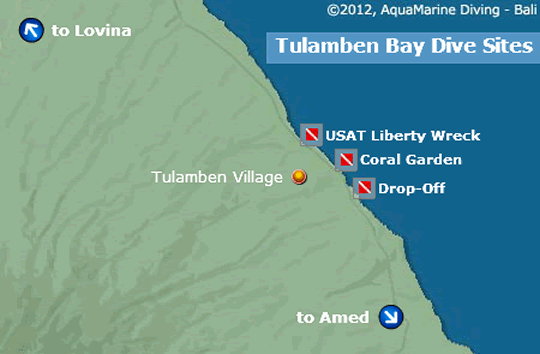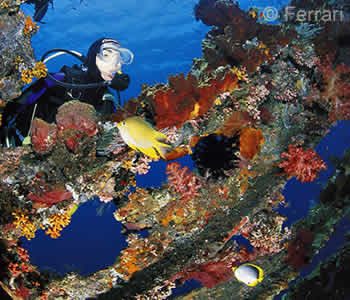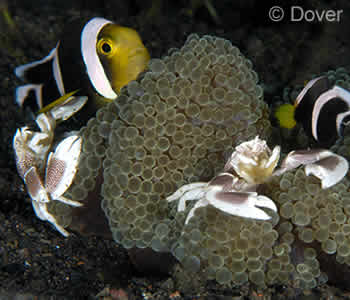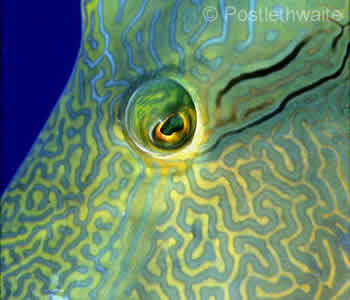Bali Dive Sites – Tulamben Bay
Tulamben Bay – Wreck Dive – Muck Diving – Wall Diving – Shore Diving – Underwater Photography

Map of Bali's Tulamben Bay Dive Sites.
Tulamben Bay: A Dive Site for Everyone
Tulamben has become Bali’s most famous diving area and therefore where you are most likely to meet internationally recognised underwater photographers and writers.
Tulamben Bay, like the rest of Bali, is situated in the world’s richest marine biogeographic zone: The Indo-Pacific. Being on the north east coast, the bay receives very plankton-rich waters from the major ocean current that moves from the Pacific to the Indian Ocean. This, coupled with the fact that the three main dive sites provide totally different physical environments, means that Tulamben contains a stunningly diverse underwater ecosystem.
Popular Tulamben Bay Dive Sites
These include the USAT Liberty Wreck, the Coral Garden or house reef, and the Drop-Off/Wall dive.
Tulamben Bay Dive Sites
Definitely Bali’s most popular dive site as well as what we believe to be one of the best wreck dives worldwide.
A great place for skills practice for novice divers as well as an enchanting reef dive.
A gentle sand slope leading to an abundant and interesting wall dive that offers a chance to see octopus, squid and reef sharks.
What to Expect at the Tulamben Bay Dive Sites
Who Should Dive Tulamben?
Everyone from 10 year old Junior Open Water divers, to hard-to-please underwater photographers, to the holiday snorkeller can find something to admire here.
Tulamben Bay is in fact the spot to which we bring participants on Discover Scuba Diving
as well as those completing their Scuba Diver or Open Water Diver course. Tulamben Bay is a great place to fall in love with diving!What You Can See in Tulamben Bay
Due to its location, Tulamben Bay is situated in the world’s richest marine bio-geographic zone: The Indo-Pacific.
Coupled with the fact that it boasts what is one of the easiest (and best!) wreck dives in the world this is one site you should not miss during your visit to Bali.
Shore or Beach Entry in Tulamben Bay
The beach is fist-sized black volcanic rocks that become sand in the shallows. This black sand does not provide the reflective properties of white limestone sand. Combined with the amount of plankton in the water, this accounts for the relatively low visibility (12-25m).
It does however provide a dramatic contrast, which brings out the colours of the corals, gorgonians, fish and other marine life. The 100s of macro-species that live here both blend and contrast beautifully with the sand.
Tulamben Bay Dive Sites General Overview
| Location: Small village on the north east coast of Bali |
| Depth: 3 – 40 metres (average depth 16 metres) |
| Visibility: 12 – 25 metres |
| Current: None to mild |
| Min. Level: Snorkellers, Discover Scuba Diving: suitable for every level/interest! |
| Dive Types: Shore dive, underwater photography |
| Conditions: In the 3 days pre-full moon in July/August, when it may be wavy, the black stone beach can make entry tricky |
| Highlights: 120m USAT Liberty Shipwreck. Extraordinary diversity of marine life, huge school of Big-eyed trevally. Full Moon Night Dive. Great photographic opportunities and colour contrast with the black sand. Great snorkelling site. |
| PADI Courses: |
| Suggested PADI Specialties at Tulamben Bay: |
Marine Life on Tulamben Bay’s Dive Sites
Resident Marine Life
There are resident populations of species and individuals from the Giant Barracudas that cruise the wreck site and around the Drop-Off, to the friendly and curious school of jacks that swirl around divers at various points during their wreck dives.
The occasional sightings of pelagics are wonderful, but it is the permanent population of Tulamben Bay that brings people here for the 1st and 100th time.
What to Spot
The marinelife in Tulamben varies. Occasional sightings of larger pelagics such Mola-Mola (Ocean sunfish), Manta rays, Whalesharks, tuna and other pelagics.
More regular sightings of unusual nudibranch species, and seasonal seahorses and pipefish.
Tulamben is a wonderful place to learn to dive and to learn about underwater life.






